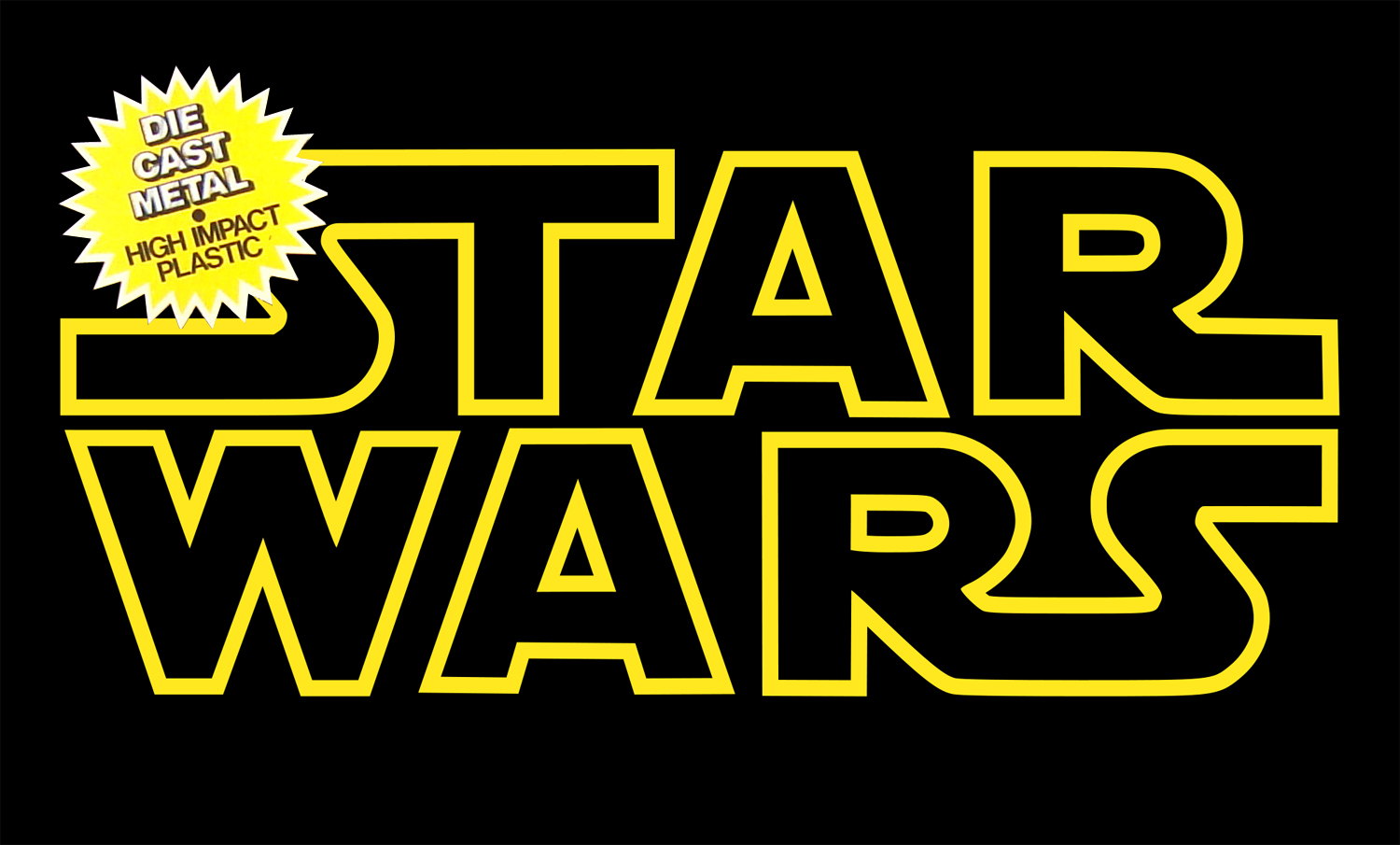This website and the ships we know and love so well would not be here without Colin Cantwell, the designer and model maker behind many of the iconic ships that we saw on screen and were subsequently so faithfully reproduced in die cast metal and high impact plastic. This article is in memory of Colin, who sadly passed away in 2021 aged 90 years old.
Colin was the concept designer behind the X-Wing fighter, TIE Fighter, Imperial Cruiser and the Y-Wing Fighter. Colin also designed the Sky Hopper, Sand Crawler and the awe-inspiring Death Star, but unfortunately none of these were available in die cast in the vintage Star Wars toy line. Colin's other credits include 2001 A Space Odyssey and War Games.
George Lucas
Colin was introduced to George Lucas by his friend Hal Barwood, with George being instantly impressed by Colin’s kit bashed models (models made from parts of other model kits). Once 20th Century Fox had agreed funding for Star Wars, George knew where to go when he wanted concept sketches for the space ships.
Imperial Cruiser
George and Colin first discussed the idea behind the Star Destroyer/Imperial Cruiser. Colin says the idea was that
‘after the scroll, the ship was like one giant dart. It kept coming and it kept coming. It had a hatch on the bottom and things kept coming out of the hatch’ but this was only half way. Then the stern came up and it had the same exaggeration.’
‘This is what had to compound itself in the first half hour of the film. It had to be all so absurd and different and insanely joyous and perilous that the audience wouldn't leave’.
Colin established that the cruiser was ‘bigger than Burbank’ with the hatch concept designed to feature in movie scenes. Initially Colin described ‘something WWII-ish of a concept, with a gunner in the fuselage.’
The ship was designed so that the viewer could really experience the massiveness of the ship.
X-Wing Fighter
The X-Wing was the first Star Wars ship that Colin designed, an idea initially derived from watching darts being thrown in an English Pub.
‘The X-Wing had to be different from anything previous. So that also meant that it had to do things that were unique. It had to engage in combat in a completely different way than before. Plus it had to be in scenes from a friendly viewpoint, where people were saying their goodbyes while it was on the ground.’
‘I achieved this by having the wings flat while it was on the ground and then they would rotate to split into two pairs in an ‘X’ shape. Manoeuvring had to be very expressive so the ship was armed by bringing the wings into an ‘X’ shape. I soon realised that the ‘X’ shape had to be shallow enough so that it could operate near the ground and then also go to the extreme open ‘X’ shape so it could fire its weapons.’
‘The X wing concept was based on a WWII plane that was highly manoeuvrable. It had to be slender, which would accentuate the shape on the ground, looking like an aircraft crossed with a dragster. It would have to fly in formation and then also be able to do complicated expressive manoeuvres. The firing would be from the tips of the wings, which was important because the subliminal aspects had to be symbolic like a cowboy drawing its guns as in a gunfight outside of the saloon. It owes a lot to the cowboy.’
The X-Wing models were kit bashed from a roadster body for the fuselage, with the back designed like the wings of an aeroplane. The wings were made from a sheet of plastic. Colin used pill containers as engines on the X-Wings and some of the other ships; ‘the containers were good because from one direction it was capped and the other direction it was hollow.’
TIE Fighter
The TIE Fighter was the last ship that Colin designed, and it was made from cut plastic sheets.
‘I had characteristics of the TIE Fighter in my mind for quite a while. I created the other ships first to see how the TIE Fighter would fit in. It had to be essentially different from the good guys, it had to be deadly and as strange as the Death Star.’
To achieve this the TIE was kept out of the opening of the film, and an air of mystery was always maintained.
‘There were constraints regarding what it could or could not be seen doing. It was in the script that it could not be used in the same kind of shots as other ships. It had to emerge from its den fully formed and fully armed.’ It was never to be seen leaving its hanger or with pilots accessing it.
‘I did many days and hours alone, imagining how these various ships could populate an adventure, and yet drawing on things as primitive as a western gun fight. The whole thing had to have a non-verbal unity of powerful styles.’
Death Star
Colin also designed the Death Star and his brief from George established that the Death Star was to be a globe of small world size.
‘The Death Star model was about 14 inches across. I knew what I wanted to do, so I bought one half of a plastic hemisphere and scratched on the surface to try different features. I initially ordered the entire sphere, but the order for the two hemispheres took a long time to come.’
‘When the two pieces of styrene finally arrived, I realised that the edges had shrunk. When the two halves were connected, the shrinking equator would be visible when lit from the side. I realized that it would be an enormous amount of work to smooth out the equator when the two halves were connected together, if it could be done at all without showing a ridge during filming.’
‘So I called George and asked “How would you feel about having a trench in the middle of the equator? This way the good guys could dive into the trench while being shot at by the bad guys in some very dramatic scenes." George thought about it and a while later he called back and said, “Let's do it, Can you do the extra work?” So that is how the Death Star got its trench.’
Millennium Falcon
Colin also designed a lizard-shaped Millennium Falcon, a design that was subsequently scrapped as it was too close to another studio’s design.
‘suddenly we had to pull my model apart and discard the parts that looked like a lizard. Quite a bit of the story was established for several scenes with the Falcon, so some of the elements had to be put together in a different way. Parts that survived from my original design were the cockpit and the turrets with the guns.’
We asked Colin if he was aware of the 1970s die cast toys based on his designs.
‘Yes, I even purchased a few for fun. The original models were constructed from all sorts of odds and ends, so it was interesting to see them in a more coherent and structurally sound medium.’
You can find out more about Colin's other work at http://colincantwell.com/ and purchase signed copies of many of his iconic designs at http://cantwellstore.com/product/autographed-prints/
All images here are copyright Colin Cantwell.




